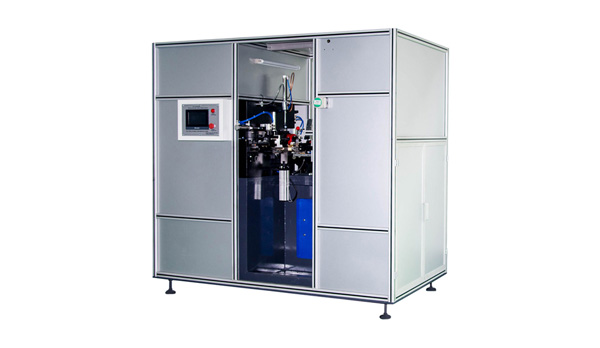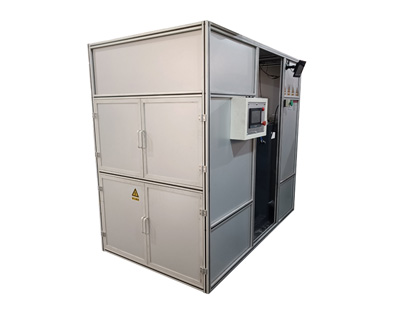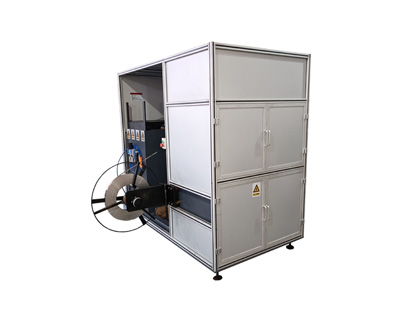By Products
Welding Machine
By Application
Automation Production Line

Search
Resistance seam welding is a joining process that utilizes heat generated by electrical resistance to fuse overlapping metal sheets along a continuous seam. Two primary mechanisms contribute to this heating effect:
Joule heating: As current flows through the overlapping areas, their inherent electrical resistance produces heat.
Contact resistance: Imperfections at the contact points between the electrodes and the sheets further contribute to localized heating.
Electric resistance seam welding (RSW) is a joining process that utilizes heat generated by electrical resistance to fuse overlapping metal sheets along a continuous seam. This article delves into its practical applications:
Automotive Industry: Joining body panels, frames, and exhaust components through resistance seam welding machines.
Appliance Manufacturing: Fabricating washing machines, dishwashers, and other appliances using RSW technology.
Food and Beverage: Producing cans, containers, and packaging with leak-proof seals achievable through RSW.
Construction Industry: Welding roofing seams, HVAC components, and building materials with resistance seam welding.
Aerospace: Joining lightweight sheets for aircraft structures using RSW methods.
These are just a few examples, showcasing the versatility of RSW across various industries. However, it's important to understand its limitations as well.

Resistance seam welding machines including their pot cover stainless steel belt laser welder utilize a rotating wheel electrode, allowing for continuous welding along straight or curved paths. Let's break down the mechanism behind this efficient process:
Joule Heating: As current flows through the overlapping areas, their inherent electrical resistance produces heat, a key principle in RSW.
Contact Resistance: Imperfections at the contact points between the electrodes and the sheets further contribute to localized heating in RSW applications.
By applying pressure through electrodes along the desired seam path, molten metal forms at the interface, creating a continuous weld upon solidification. This efficient heat generation translates to several practical benefits:
High Production Rates: The continuous nature of the process and automation potential enable rapid seam creation, ideal for high-volume manufacturing with RSW technology.
Clean and Environmentally Friendly: Unlike processes involving gas or flames, RSW machines generate minimal fumes and heat, contributing to a safer and cleaner workspace.
Precision Welding: Precise control over electrode pressure and current allows for consistent weld quality and minimal distortion in RSW.
Joint Strength and Leak-proof Seals: Properly executed RSW welds can offer high strength and excellent leak resistance, essential for applications like containers and pressure vessels using resistance seam welding technology.


Deciding if electric resistance seam welding is the right choice requires careful consideration of both its advantages and disadvantages:
Advantages:
High Productivity and Automation: RSW machines offer efficient, high-volume production through automation.
Clean and Environmentally Friendly: Improves worker safety and reduces environmental impact with RSW technology.
Precision and Consistent Quality: Ideal for applications demanding strong, leak-proof welds using resistance seam welding.
Wide Range of Applications: Versatile across various industries, making RSW machines a valuable tool.
Disadvantages:
Material Limitations: Not suitable for all materials, posing limitations for RSW applications.
Joint Geometry Limitations: Challenges with complex joint configurations require alternative methods beyond RSW.
Nugget Size Control Challenges: Precise control over weld nugget size and depth can be challenging in RSW.
Higher Initial Investment: Requires upfront investment in resistance seam welding machines compared to some simpler techniques.
By understanding these strengths and weaknesses, you can make informed decisions about when RSW is the ideal solution for your joining needs.
Continuous advancements in technology and control systems are addressing the limitations of RSW. Developments like:
Advanced process monitoring in RSW machines
Robotic integration for improved automation
New electrode materials for expanded capabilities
No. 28 Jinteng Road, Wuxiang, Yinzhou District, Ningbo
Copyright © NINGBO XIHE AUTOMATION EQUIPMENT CO.,LTD. All Rights Reserved.